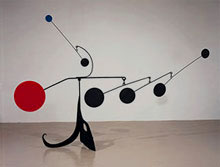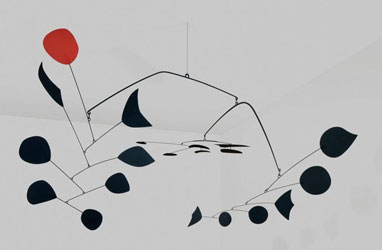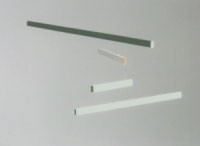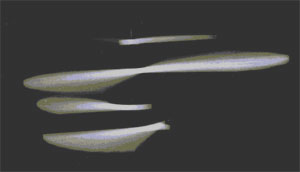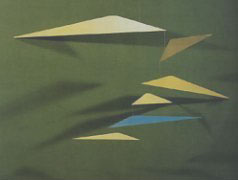|
|
The "mobiles" developed by Alexander Calder since
the 1930's, use
organic-looking shapes, hung in balanced constructions which can
rotate freely. They are very light; the slightest breeze of air
creates (unpredictable) motions. Their official designation is
"mobiles à main", which sets them apart from Calder's earlier
motorized kinetic pieces ("mobiles à moteur").
The "mobile à main" has the mechanical structure
of a planetarium: nested rotary relations. But its movements are different:
horizontal pendulums with unpredictable speeds and amplitudes, rather than
uniform rotations. We are in Arp's world rather than Mondriaan's.
An almost readymade version of this idea had been carried out Man Ray in
1920: a construction of cloth-hangers. (Cf. Duchamp: bottle-rack, coat-racks.
Cf. Arman: accumulations.)
Calder found that a motor forced repetition
on the movement: if the mechanism was not rather complicated
there was a danger of the movement becoming monotonous. (...)
With his 'mobiles à main' Calder found the simple, perfect
way of giving his constructions mobility, by the use of equilibrium,
as fundamental a principle as Duchamp's rotary movement. These
wires, suspended interdependently and moving their frail elements
in space, offer an inexhaustible range of possibilities. (...)
Calder took the history of mobile art a step forward by the
introduction of endless variation, the fact that the movement
of a mobile never repeats itself exactly. It is now possible
to create endlessly complicated combinations, eternal change.
As I see it, everlastingly varied rhythm is one of the assets
of mobile sculpture, without which it is in danger of becoming
more boring than static sculpture.
Hultén thus distinguishes:
- the number of configurations that may occur
(finite or infinite);
- the sequence of configurations (fixed or not);
- the nature of the movement (uniform or varied).
A combination of different of different periodic movements
yields an infinite, non-cyclic sequence of configurations,
iff the periods of some of the movements are incommensurable;
but its a deterministic well-ordered process, and it is experienced
as such. In Calder's "mobiles à main",
the sequence is non-deterministic, because the motions are caused
by unpredictable external influences.
References
Alexander Calder: "Mobiles." In:
Myfanwy Evans (ed.): The Painter's Object, Gerold
Howe, London, 1937.
Karl G. Hultén: Den Ställföreträdande
Friheten eller Om Rörelse i Konsten och Tinguelys Metamekanik. (Substitute
Freedom or On Movement in Art and Tinguely's Meta-mechanics.)
Special issue of Kasark, October 1955. (English translation
in: Pontus Hultén, 1975.)
K.G. Pontus Hultén: Tinguely. 'Méta'. London: Thames
and Hudson, 1975.
Jean-Paul Sartre: "Les Mobiles de Calder," Carré, 1946. [OnLine
with an English translation.]
|
|
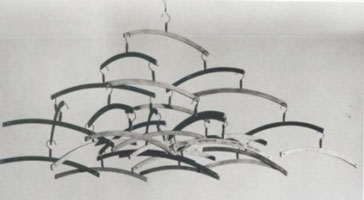
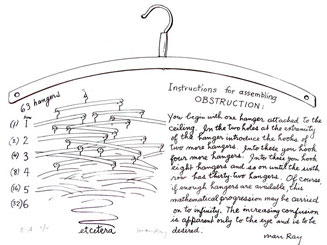
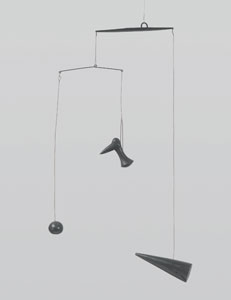

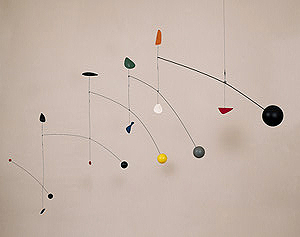

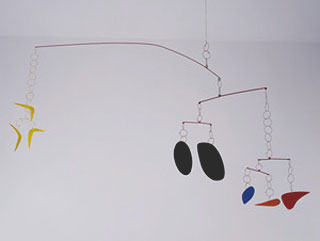
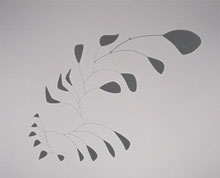
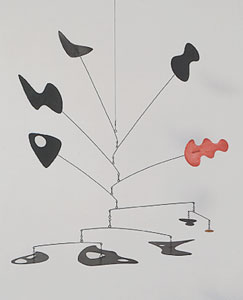
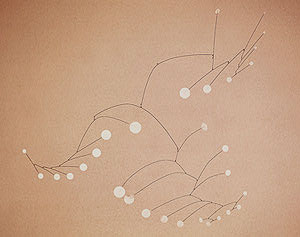
-Unt.jpg)
-PourVilar,60x190cm-s.jpg)
